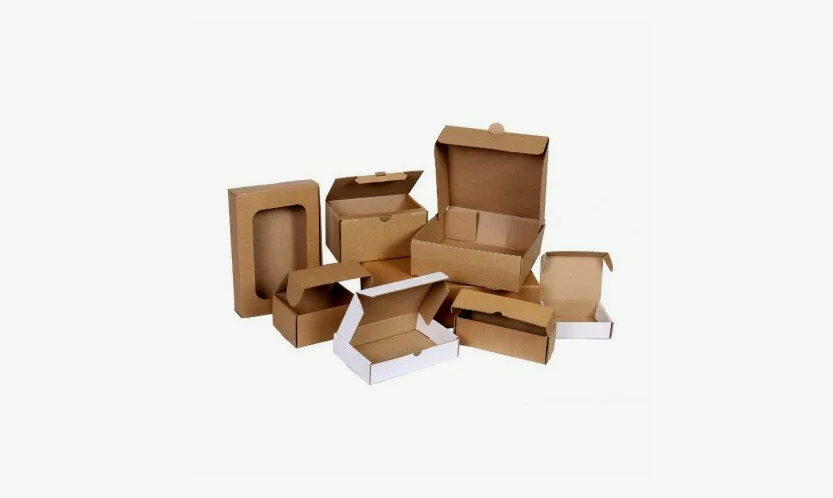When it comes to running a successful business, one of the most crucial aspects of product presentation is packaging. While many companies focus on crafting high-quality products, they often overlook the importance of box packaging. The box that encases your product does more than just provide protection – it plays an essential role in marketing, branding, and customer experience. Choosing the right box packaging for your product is therefore an art that combines both functionality and aesthetic appeal.
In this guide, we’ll explore the key elements to consider when selecting box packaging for your products, with a special emphasis on the importance of box packaging design in brand identity. We’ll also dive into the various options available and provide tips on making packaging decisions that help elevate your business and leave a lasting impact on your customers.
The Role of Box Packaging in Product Presentation
Before we delve into the technicalities of choosing the right box packaging, let’s establish the importance of this component in your overall product strategy.
Protection and Preservation
The most fundamental purpose of packaging is to protect your product during transit and storage. Whether you’re shipping items locally or internationally, the right box will keep the product safe from damage due to handling, pressure, weather conditions, or other hazards. This is especially important for fragile goods or perishable products.
Choosing the wrong box material or size, however, can result in unnecessary shipping costs or exposure to damage. A box that is too large for the item will allow it to move around, increasing the risk of damage, while a box that’s too small may crush the contents.
Brand Recognition
Packaging serves as a tangible connection between your product and your customers. Box packaging design plays a crucial role in brand identity, and it’s one of the first things a potential customer will notice when they receive or encounter your product. The right design can tell a story about your brand’s values, quality, and personality.
Packaging design is an essential visual element of your branding toolkit. Using custom colors, logos, and patterns that are aligned with your business’s image ensures that every time your product is seen, it reinforces brand recognition and familiarity. Think of top brands like Apple, Coca-Cola, or Tiffany’s – their packaging alone is iconic and immediately recognizable.
Convenience and Usability
Apart from its protective and aesthetic role, packaging should be designed with usability in mind. Can your customer easily open the box? Is it reusable or recyclable? These are factors that contribute to the overall experience. A well-designed package doesn’t just house the product – it enhances the customer’s experience of interacting with your brand. Thoughtful design choices such as easy-open tabs or eco-friendly materials show your customers that you prioritize both functionality and sustainability.
Consumer Perception
How your product is packaged can influence consumer perception and their decision to purchase. Consumers associate premium packaging with premium quality. A high-end, well-designed box communicates that your product is worth the price tag. On the other hand, cheap or poor packaging may convey that the product is low quality.
Key Factors to Consider When Choosing Box Packaging for Your Product
Now that we understand the role packaging plays in brand identity and consumer experience, let’s break down the steps to choosing the right box packaging for your product.
1. Determine the Box Size
First, you need to measure your product’s dimensions. Ideally, packaging should be as compact as possible while still ensuring the product is safe and comfortable inside. Avoid oversized boxes, as they can increase shipping costs, negatively impact the environment due to excess material usage, and potentially harm the product in transit due to extra movement.
Be sure to consider:
- The length, width, and height of your product
- How much padding or protection is needed
- Weight of the product
Accurate sizing of packaging ensures your products are packed efficiently, reduces shipping costs, and provides adequate protection.
2. Select the Right Box Material
The type of box material plays a huge role in the durability, weight, and cost of your packaging. Common materials include:
- Corrugated Cardboard: Most products that require shipping or storage are best placed in corrugated cardboard boxes due to their strength and durability. Corrugated boxes are great for fragile or heavyweight items.
- Chipboard: Ideal for lighter products, chipboard packaging offers flexibility, is cost-effective, and is used widely for retail packaging such as for cosmetics, books, or electronics.
- Kraft Paper: Environmentally friendly kraft paper packaging is becoming more popular, and it provides a natural aesthetic, often used for sustainable or eco-conscious branding.
- Plastic: While not as common for most packaging, plastic may be used when you need extra water resistance, for smaller products, or for specific needs like pouches or jars.
3. Understand Product Protection Needs
Certain products may require specific types of protection. Here are a few ways to protect products within their boxes:
- Cushioning or Filler: Items such as electronics, glass, or delicate home goods might need extra padding inside their boxes to avoid potential damage.
- Custom Inserts: For more specialized products, you may need a custom insert to secure the product firmly within the box. This is a common option for cosmetics, jewelry, or tech gadgets, where additional support helps to present the product perfectly.
- Seals and Tapes: Consider using tamper-evident or branded seals for added security and product integrity. This is often used for premium products where customers expect extra care in the packaging.
4. Consider Printing and Design Options
The importance of box packaging design in brand identity cannot be stressed enough. Custom prints and designs help promote your brand while also adding to the visual appeal of the product.
Some design tips include:
- Use your brand’s colors, fonts, and logo on the box
- Ensure your branding design aligns with your brand values – for instance, a sustainable brand may opt for simple, eco-friendly designs.
- Consider creating a “unboxing experience” with beautiful box designs that encourage your customers to share images on social media, amplifying brand exposure.
- High-quality graphics, textures, and patterns can elevate your product’s appeal. Whether you go for minimalism or full-on visuals, keep the focus on brand recognition.
5. Eco-Friendliness and Sustainability
Sustainability is an increasingly important factor for modern businesses and consumers alike. By choosing eco-friendly materials and using minimal packaging, you can demonstrate your commitment to environmental stewardship. Boxes made from recyclable, biodegradable, or recycled materials are often preferred by consumers, especially in industries where sustainability is a key selling point.
6. Test and Tweak
Once you’ve narrowed down your box options, test them with real products. It’s crucial to perform some real-world testing to check the box’s durability, how well it protects the product, and how it performs in transit. A design that works well on paper or a mock-up may not always hold up under shipping conditions.
Feedback from customers also offers valuable insights that you can use to tweak or improve the design.
Final Thoughts
In conclusion, the right box packaging doesn’t just serve a functional purpose – it is a vital part of your brand’s identity. The key to success is selecting packaging that protects your product while also reflecting your company’s values, personality, and aesthetic vision.
Take the time to assess your product’s size, protection needs, material type, and your brand’s visual identity, and make informed decisions about your packaging. High-quality box packaging doesn’t just secure your product – it also elevates your customer’s experience, strengthens your brand, and fosters consumer trust.
FAQs
1. What is the best packaging material for fragile products?
Corrugated cardboard with inner cushioning or foam inserts is typically the best choice for fragile products, offering ample protection during shipping.
2. How can packaging affect my brand identity?
Packaging is the first thing your customers interact with and serves as an extension of your brand. Effective packaging reflects your company’s values, personality, and product quality, ultimately building customer trust and recognition.
3. How can I make my packaging eco-friendly?
Switch to recyclable, biodegradable, or compostable materials, reduce the size and weight of your packaging to save on shipping, and minimize plastic usage. Look into companies that offer eco-friendly packaging options.




